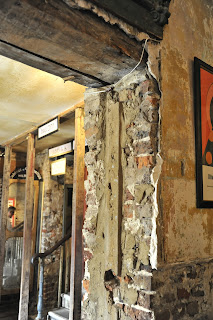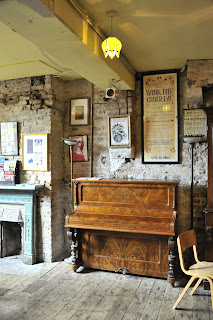In this essay I will discuss ideas on the relationship between old and new building in modern environments. Using case studies, I will show the differences between the western culture of preserving the old heritage in contrast to the Chinese tread of creating modern buildings.
My graduation project was a challenge to me which related to urban planning. We worked as a 4-people-group. This project is to design and plan a cultural and commercial block in Beijing. It is a real project that our tutor's work team is doing. This block will have shopping malls, hotel, museums and cultural communication center. What we designed is more modern and idealized. Because there were lots of old house around the block, we tried to combine our design with the traditional function and culture to make the modern block be more with the memory of Beijing. I shaped my own opinion about old buildings reconstruction after these studies.
With the technological and economic development of the modern society, building modern buildings constantly is making the land resource become more and more short. The topic of reusing and reconstructing old buildings is hot nowadays. Reusing old building is the needs of environmental protection and sustainable development. The old buildings not only are the historical protected buildings, but also are the normal, less value and less protected old buildings. In my opinion, buildings carry the cultural and historical memory of the city where they are. A city needs cultural memory itself. The ways of changing the old buildings in old and new can be a large variety. The purpose of changing is always for show the cultural memory of the city to people. Besides some degree of protection for the old buildings and districts, the old buildings also need revising, updating or modernizing based on keeping their characters and scale. Cities need old buildings. "Compared with pursuing for dramatic changes, more consequent, gradual, complicated and novel changes in buildings is better for reusing the old buildings." Said Jane Jacbos.
In this paragraph I will describe the problem about old buildings reconstruction in China and compare the situation with western countries. The problem of dealing with the abandoned or ole buildings can not get attention from government and people in China. Most of them do not understand the importance of old buildings to us. They just believe that the development of economy equals modern western style. Governments build modern buildings which will translate to financial development and remove large area of old buildings. The ways what governments do make the people think less about the old buildings heritage. Many old blocks became out of use even totally abandon because of less attention and managing from people. But in London, old buildings get much more attention, most of the old buildings still have different function today. When I am walking in a street in London, the atmosphere of British architecture cultural is strong. The details of old buildings still being preserved, I can learn the architecture details in everywhere. When people in London have a chance to live in old buildings they will think it is a wonderful experience to live in Victorian’s buildings, but Chinese people still can not understand this feeling. London itself just likes a big library of architecture history.
This old block in China became totally abandon after reconstructing failed. All the shops closed during the working hours.
In London, we can see the old block with new functions still be alive nowadays.
I will analyze some successful cases for old buildings reconstruction in Western country in this pragraph. For insurance, the Musée d’Orsay Museum in Paris used to be a train station, an Italian architect named Gae Aulenti designed it into a museum which is one of the best art museum in Paris now. She connected the building with the environment of city and did full use of the original features of the building. Most materials of the building get reserved in this way. Gae Aulenti said that architects should be noted that the new construction to maintain the city's style.
Actually there are a lot of examples old buildings reconstruction in London, the ways of combining old buildings with new function is interesting and deserve to learn. The British Museum is a classical case. The central courtyard of British Museum became out of use once upon a time. Norman Foster designed a smooth flowing curved lighting roof which can contain all possibilities and did nothing to the round reading hall which used to be the British Library. The central courtyard now is spacious and bright and a system of evacuating crowd of British Museum. When people walk in these buildings, they can still feel the original atmosphere of the buildings.
The Wiltons Music Hall is a unique building comprising a mid-19th Century grand music hall attached to an 18th Century terrace of three houses and a pub. It was old but it had the special feel of nostalgia that made me feel comfortable when I was inside. The details of this house was old or made to be looked like old, like the stairs, the different types of furniture, the piano, the lights, even the bricks on the walls were broken, it is still beautiful. They were so suitable for being together in this theater. "This is the most important surviving early music hall to be seen anywhere......It is of outstanding architectural and archaeological significance." The Theatres Trust.
I will read a lot of books about old and new architecture to help me to understand better about the meaning of old buildings reconstruction. Besides, I will collect and analyze famous architects’ work in the world. I may do research from the material, structure, cultural style or other respects of the old buildings. I can collect different details of old architecture in London as much as I can, compare with the details in China. The architecture is different because of the different culture, so the ways of old buildings reconstruction do. I am willing to see and learn different ideas and ways of old buildings reconstruction. The MA project for me may not be a complete project for buildings. It can be presented with a space made by different old and new materials to show the combination of old and new, to find the best method of performing the old space in modern ways.
Buildings have lives. David Littlefield and Saskia Lewis argue that buildings have voices and that it is worth listening to what they have to say. Cities need old buildings. Reusing the old buildings should be paid more attention. As a practical result of workshop 3, I want to create a virtual museum with all the work of art, design, architecture and literature that influence for this project.
Bibliography:
- Architecture Reborn: The Conversion and Reconstruction of Old Buildings
- Re/architecture: old buildings/ new uses
- Down to Earth: Mud Architecture – An Old Idea, A New Future
- Metaobolism, The City of Future: [dreams and visions of reconstruction in post war and present-day, Japan]
- Re-forming British: Narratives of Modernity Before Reconstruction
- Idea and Style; The Quest for Modern Architecture
- Space In architecture: The Evolution of A New Idea In The Theory and History of The Modern Movements
- When Culture Meets Architecture
- Architecture Culture, 1943-1968: A Documentary Anthology
- Architectural Voices: Listening to Old Buildings
- Old to New_














没有评论:
发表评论